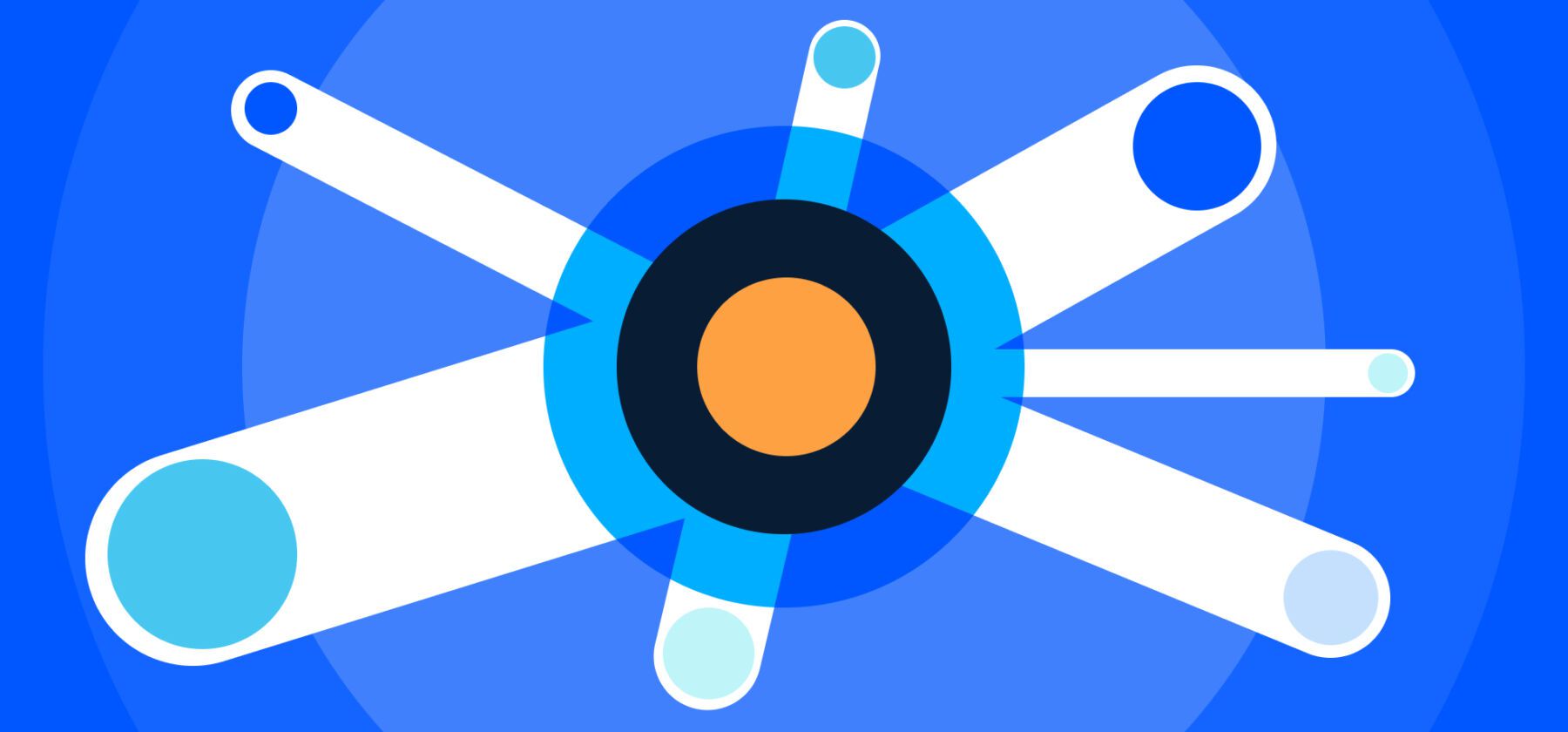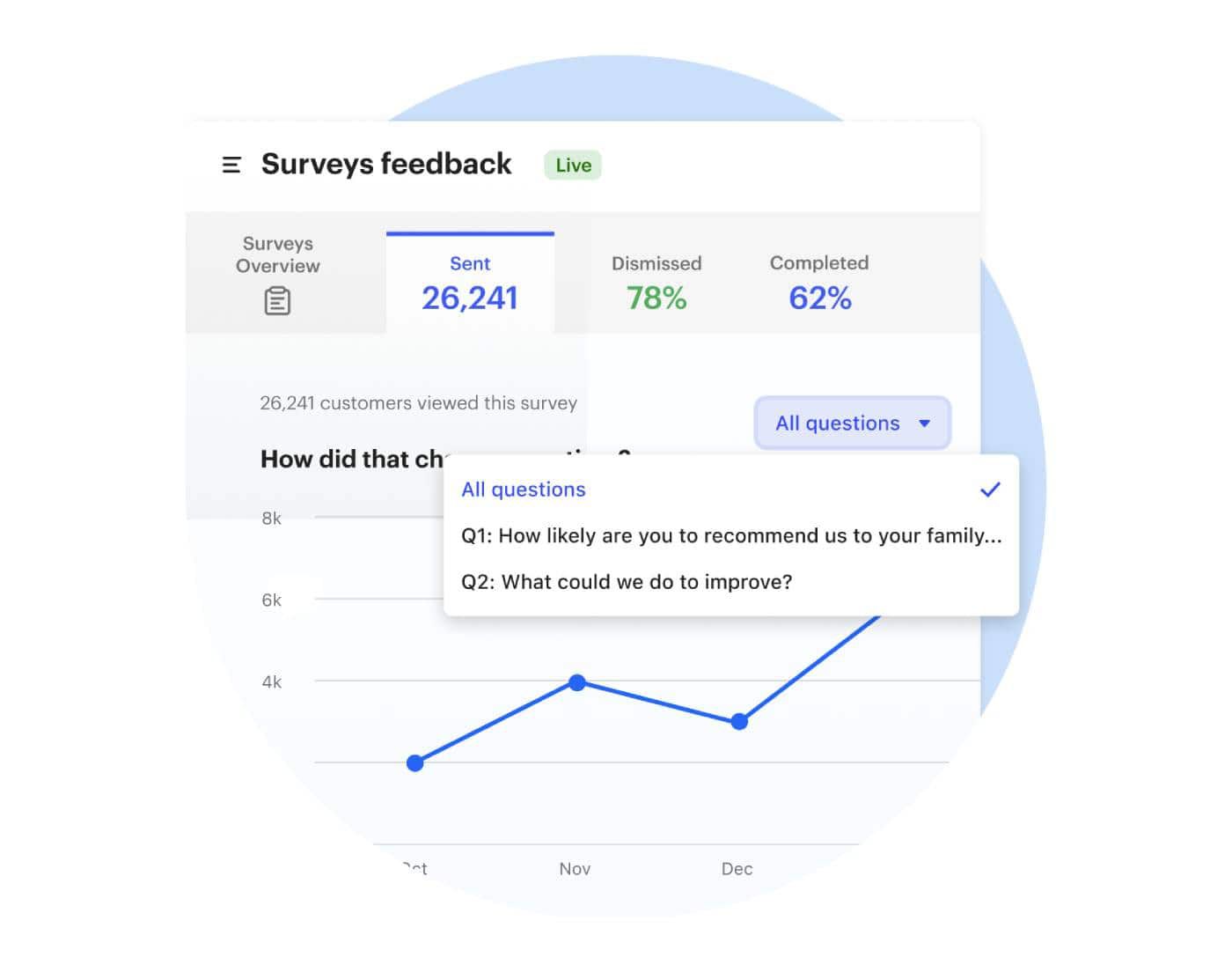
What is first-party data?
Main illustration: Gregory Taxerman
First-party data is the future of online engagement and customer experiences. There’s no two ways about it.
In June 2021, Google confirmed that it will no longer track individuals online via cookies. This isn’t surprising given competitors such as Apple’s Safari and Mozilla Firefox are cookieless by default – however there are already debates about how Google will collect and use data thereafter.
One aspect that can’t be debated is the value of first-party data as we proceed into this cookieless future. Simply put, first-party data is information that your company owns and has collected directly from your audience (i.e. customers, site visitors, leads). It’s a rich, first-hand source of truth that powers a higher standard of engagement efforts. Given there have been constraints put on third-party data over the years (ie, GDPR), growing questions over the responsible use of said data, and a desire for transparency from consumers the question really is – why haven’t companies prioritized first-party data in the first place?
Let’s discuss what first-party data is, how Intercom thrives on it, and how to leverage it to support smarter customer engagement.
What is first-party data?
First-party data is information you collect directly from your customers, site visitors, and app users based on their actual interactions with your business across numerous touchpoints – both historical and in real time. In a nutshell, it is any information you collected consensually and first-hand from your users – and therein lies its value.
“76% of consumers are now happy to entrust that data to businesses in exchange for superior experiences”
First-party data allows businesses to create ultra-personalized content, advertising and, most importantly, experiences that cater to individual users, because it is the most accurate source from which you could gather customer insight (i.e. what customers are interested in, what problems they are facing, what their needs and preferences are). However, gathering accurate data and taking the right actions is only possible when you have a mechanism in your product or on your site that meets customers in the moment to ask them what is that they desire and need.
In the past, we have discussed how customer experience has become the key vehicle for attracting and retaining customers – and first-party data is the fuel for that experience engine. While consumers have been hesitant about data sharing in the past, 76% are now happy to entrust that data to businesses in exchange for superior experiences, offers, and products. This is an understanding from which all sides benefit from.
“An open channel of communication between the customer and the business – in the product, in the moment and on their terms – is essential to properly collect and harness the power of first-party data. But, it only becomes more valuable when you enable that engagement channel throughout the entire customer lifecycle.”
Anna Griffin, Chief Marketing Officer at Intercom
At Intercom, we have been long-time believers in the importance of customer data – conversing with our customers directly to get rich insights, storing it securely, and using it to continuously improve experiences. With this data you can personalize every interaction on your site – send targeted messages by segment, personalize campaigns, view customer interactions and chat history, or even automate your chatbots by training them to recognize frequently asked questions.
The customer journey is no longer linear, involving communications from marketing, sales, and support reps from lead to loyal customer. That’s why we made it easy to integrate data from your entire tech stack – meaning your customers’ context follows them regardless of where they are in their customer journey or who they are talking to. Brands struggle to offer seamless omni-channel experiences, with about half of business decision-makers saying their brands do not have the ability to carry context across channels. This is a major hurdle to staying competitive, as about 85% of business respondents also state that their customers prefer to have their context follow them from channel to channel for a seamless brand experience. Therefore, bringing your data sources together in one tech stack, allows your team to interact with customers in a way that continues to meet their growing expectations.

The problem with third-party data
Third-party data is collected by organizations that don’t have a direct relationship with your audience. Data processors collect it from multiple sources, clean it up, and then provide it (or sell it) to digital marketers, advertisers, and sales teams, who use it to create targeted interactions with leads and customers.
“Compared to rich firsthand information contributed by individuals, it provides only a broad understanding of a large audience”
One problem with this type of data is that it tends to be more ambiguous. Compared to rich firsthand information contributed by individuals, it provides only a broad understanding of a large audience – not taking into account the different experiences and goals of the individual.
Not only that, but from GDPR to Google’s cookieless future and even attempts by companies such as Apple’s “Intelligent Tracking Prevention” update, third-party data is often restricted by data privacy laws. Not to mention the methods used to collect it may not align with consumers’ increasing expectations for privacy.
As an alternative to the “cookieless future,” Google recommends strengthening first-party data processing.
“It’s about more than reinforcing loyalty and improving experience. It’s about creating new opportunities for transactions at the very moment when customers and prospects are most interested or need you most. In a cookieless world, ongoing engagement across the customer lifecycle is the future of business and is the untapped area for the next generation of customer value and growth.”
Anna Griffin, Chief Marketing Officer at Intercom
Whether you are a marketer, sales rep, e-commerce manager or otherwise, shifting focus from third-party to first-party data shouldn’t be cause for alarm. In fact, we believe this period of change will bring many opportunities for businesses to strengthen their processes of data collection, analysis, and use. And, those who put fresh data processes in place early stand to get a jump on the competition.
How Intercom thrives on first-party data
Moving away from third-party data doesn’t mean marketing teams will now lack the data they need to build personalized, responsive experiences. They just might need to invest more fully in tools that help them gain actionable data from consumers who opt in to share this information.
“Unified customer communications platforms, such as Intercom, are key for creating these meaningful engagements for all teams across sales, marketing and support. Not only can you build rich AI across all the touchpoints of the customer lifecycle, but it serves a single customer record, allowing businesses to break down silos and help cross-functional teams to work together to better serve the customer.”
Anna Griffin, Chief Marketing Officer at Intercom
Intercom’s unified platform, The Engagement OS, ensures you can leverage all the customer data you collect firsthand across every touchpoint from sales, marketing, and support. Targeting, personalization, optimization, and reporting also becomes more robust and effective with all your customer and event data (including actions taken on your site, engagement history, chat history, what package they’re on, and more) captured and stored by Intercom. Plus, with the ability to enable two-way communication channels, you can continuously listen, learn from your customers, and take action across all stages of the entire customer journey.
“Create cohesive and personalized experiences that will result in happy and loyal customers”
Collecting dynamic, live data directly from your customers means you can power personalized and highly targeted messages and workflows, and uncover deeper insights. These interactions are stored within Intercom’s customer communications platform and shared across all channels (eg. Switch, Mobile Push and Carousels, Whatsapp, in-app Messages, Messenger, Bots, email, social, Surveys and more). Therefore, you can create cohesive and personalized experiences that will result in happy and loyal customers.
Not only that, but you can rest assured that all data collected is stored securely within Intercom. Our Information Security (InfoSec) team safeguards our customers’ trust in our platform and we are evidenced by our SOC2 Type II and HIPAA attestation reports and ISO27001 certification, so that businesses can collect and store data with peace of mind.
Intercom’s Engagement OS is built with data syncing in mind – with features programmed to collect, store, and utilize information as well as being compatible to integrate tools you already use. Let’s take a look at some of those key functionalities:
Custom Bots
Our Custom Bots collect first-party data (for example, their name, email, how often they visit your site, the device they visit from, where they are located, when they signed up to your product and more) directly from customers, making support much quicker and more efficient, and saving your team time and energy. Our bots learn from the information they collect to automatically improve the quality of your support offered. For example, if a chatbot knows how to answer a question like “how do I add another user?” it can automatically recognize “where do I add another user?” as having the same meaning. That similar phrasing can automatically be added to its knowledge bank, so future questions are phrased in the same way.
With our Resolution Bot, you can take this a step further by proactively suggesting relevant answers before the customer even finishes typing. That means faster, more consistent support for your customers and fewer repetitive questions for your support agents. Resolution Bot also uses your existing resources, such as FAQs or knowledge base articles, to help answer and resolve queries. You have the power to choose how it answers based on data such as customer spend, business type, location, and more. This means that your customers’ problems are resolved with answers that are hyper-targeted to their needs.
Surveys
Implement Intercom Surveys to drive truly personalized customer experiences. Collect first-party data and use it to power follow-up actions and workflows at scale. This feedback allows you to continuously optimize how your business operates in simple and efficient ways – from lead capture through to onboarding, NPS®, product feedback, and churn. Create personalized experiences by creating messaging campaigns based on customer answers, personalizing content and the help that they receive from your team, and much more.

JavaScript
Learn more about your customer behaviors with our JavaScript API. You can use these insights for personalization such as customizing how the Messenger appears for them. With events, you can record each time a customer takes an action, the details of that action (metadata) and, the first, last, and total number of times a customer has taken that action. Once you start tracking events in Intercom, you can filter your customers and send them messages based on their actions.
For example, you can send a curated nudge message when it has been “X days” since the last time they used a specific feature. Once you’ve set these up you can send the right messages to the right customers at the right time and customize how the Messenger appears for your users. For example, if you’d like to provide VIP support for premium customers, you could show it for these users and hide it for everyone else.
Salesforce
Bring sales, marketing, and support data together with our Salesforce integration. Automatically create new leads as they land on your website and provide your teams with full context on who they’re engaging with. Automation also allows you to get leads and customers to the right teammate faster by routing them to their account owners or the right sales or support team. The data you collect through Salesforce can then be used to power targeted campaigns and audience segmentation means messages are sent to the right people at the right time for more effective engagement.
Segment integration
Segment is a Customer Data Platform that you can then integrate with Salesforce to help automate your collection and control of customer data at scale. Segment offers a complete toolkit to standardize data collection, unify user records, and route customer data into any system where it’s needed.
“As companies need to employ new marketing and analytics tools for first-party data collection, consolidation tools will be key for streamlining data”
You can also sync how your users interact with your brand across your web, mobile, and server apps with Intercom. As companies need to employ new marketing and analytics tools for first-party data collection, consolidation tools like Segment will be key for streamlining data access for all teams across sales, support, and marketing.
Marketo
Our Marketo integration allows you to identify website visitors based on the info they explicitly provide in the Messenger e.g. name or email, although it does also use some cookie tracking. You can map any Intercom attributes to corresponding fields in Marketo when a new lead is created or when qualification data is added or updated (e.g. industry, company size, etc.) and log conversation information in Marketo (e.g. where the conversation with the lead was initiated). Integrating Marketo with Intercom means you never miss an opportunity to nurture, engage with, and convert a lead.

First-party data, second-to-none experiences
The bottom line is that accurate data is necessary for successful customer journeys – without data-driven strategies, customer experiences won’t be competitive enough to stay relevant and will ultimately lead to churn. In fact, 60% of the online adults in a Forrester study said, “I’m unlikely to return to a website that does not provide a satisfactory customer experience.”
Our data comes from the customer, providing businesses with the opportunity to really learn about their audience and create rich, seamless, omnichannel experiences. This is what online customers are now expecting and it’s a bar that will continue to be pushed.
Check out our Engagement OS to discover how you can meet your customers at any touchpoint in their journey with data-fueled personalization, messaging, and more.






